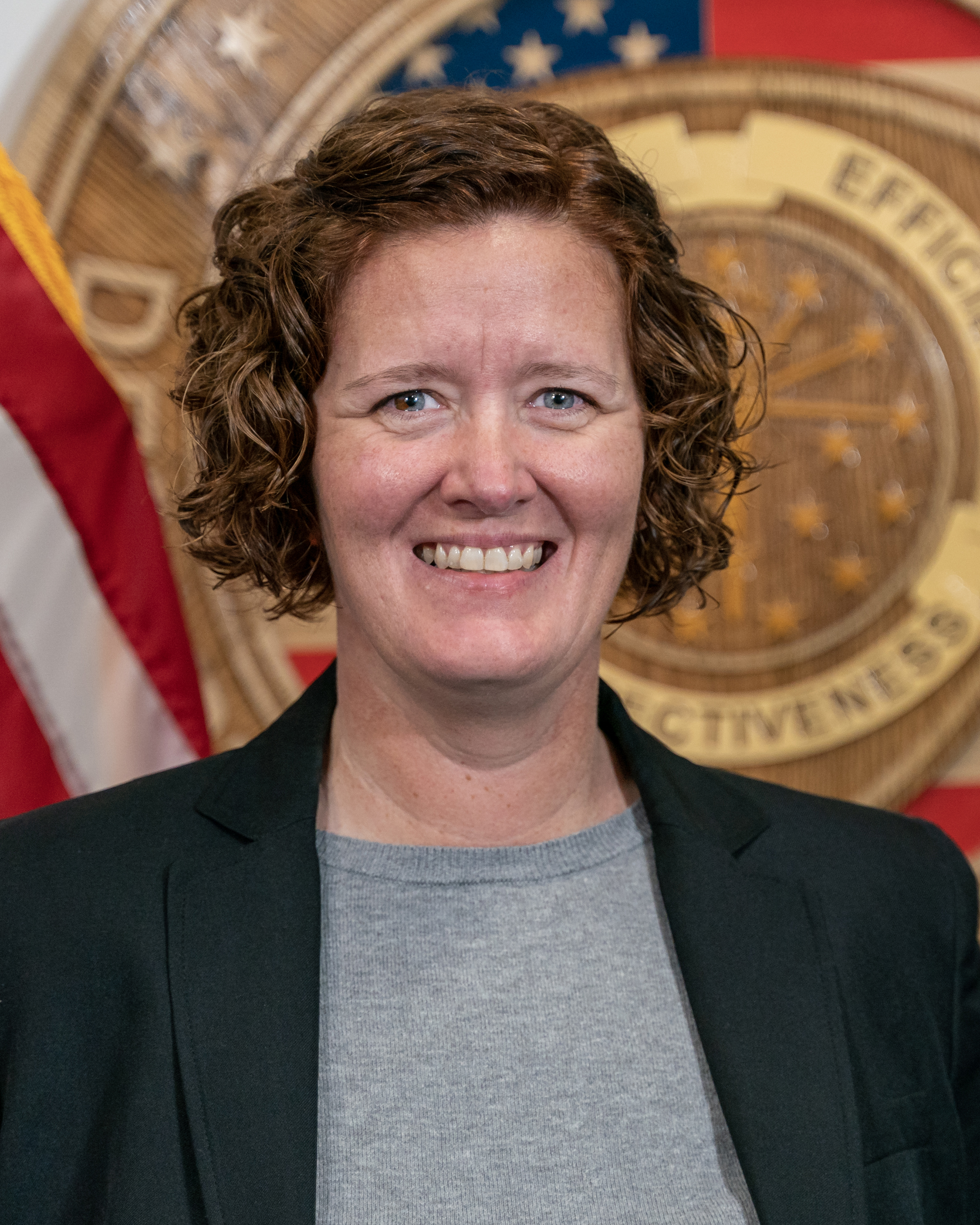Annual Reports
- IDOC
- News, Media, and Publications
- Current: Annual Reports
Letter from the Commissioner
For the Indiana Department of Correction, 2022 was a year of significant accomplishments and a change in leadership. I want to sincerely thank my predecessor, Commissioner Rob Carter, for his committed service. We made incredible progress under his direction, and I’m proud to continue building on that solid foundation.
As we move forward, I want to focus on creating a workplace culture where everyone feels welcome, supported, and valued. Our staff are the backbone of the department, and they deserve our unwavering support.
Investing in our staff will be a top priority. As the correctional landscape evolves, we must stay adaptive and resilient to meet the challenges ahead. At the same time, we need to be preparing the next generation of leaders to take charge of this agency. We need to equip staff with the knowledge and skills necessary to excel in their current roles as well as in the future.
The health and wellness of our staff are also very important. Working in corrections can be emotionally taxing and we need to provide the resources our staff need to continue to do their jobs. Our strategy will be to grow our programs that support both physical and mental health and offer new options and resources to address staff needs.
We will not waver from our commitment to ensuring public safety and assisting in the rehabilitation of those who are incarcerated. We continue to strive for successful reintegration for all re-entering citizens through partnerships with our communities and evidence-based programs.
Transparency and open communication are essential to building trust, and we will continue to engage with all stakeholders, including our staff, incarcerated population, valued partners, and Hoosiers across the state.
Thank you for being a part of what we do,
 Christina Reagle, Commissioner
Christina Reagle, Commissioner
Mission
We promote public safety by providing meaningful, effective opportunities for successful re-entry.
Vision
As the model of best correctional practices, we strive to return productive citizens to our communities and inspire a culture of accountability, integrity and professionalism.
Mission
We promote public safety by providing meaningful, effective opportunities for successful re-entry.
Vision
As the model of best correctional practices, we strive to return productive citizens to our communities and inspire a culture of accountability, integrity and Professionalism.
Changing Lives
Educational Services
Programs
Re-Entry Services
Workforce Development
Facility Highlights
Adult Facilities
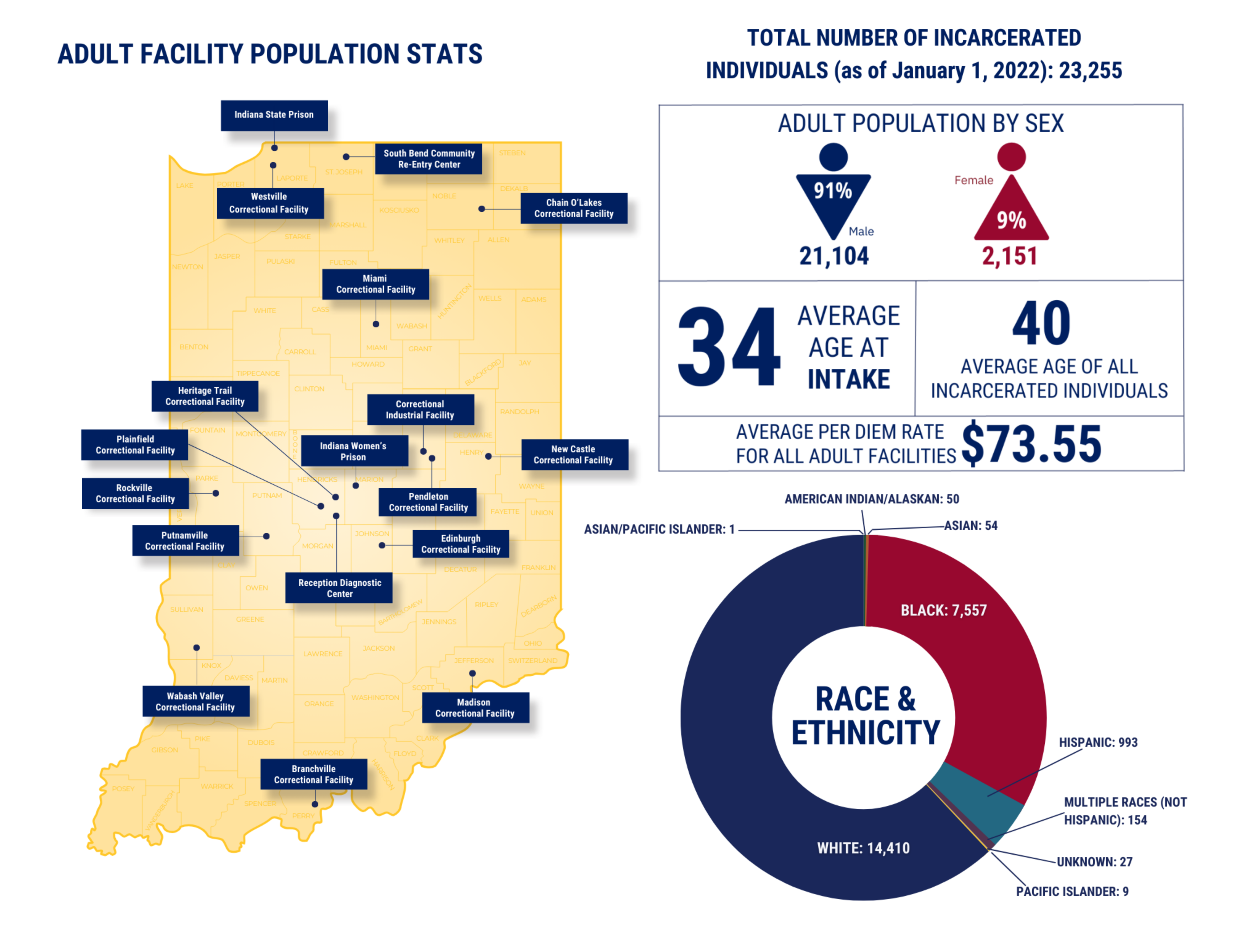

Juvenile Facilities
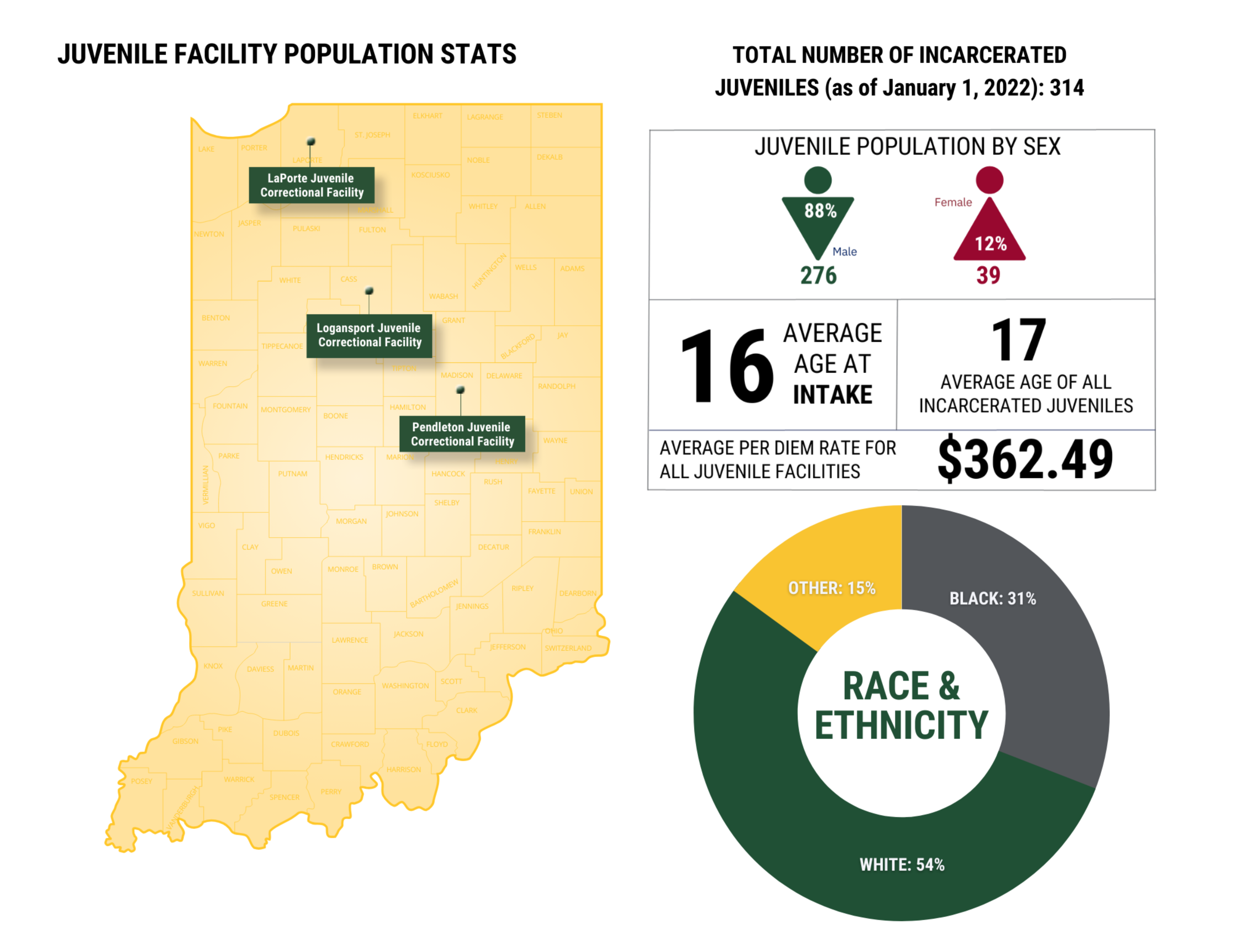

Facility Year End Review
Branchville - The facility added Superintendent Paul Kranning to the IDOC Hall of Honor. Severing from 1984 to 2003 Kranning was instrumental in modernizing the correctional facility.
Chain O'Lakes - In partnership with Stillwater Retreat Ministries in Yoder, Indiana. Residents volunteered to help clean up a dilapidated property so it could be refurbished by the campground.
Correctional Industry Facility - Despite manufacturing delays on many products across the world, the Correctional Industrial Facility’s maintenance staff made significant updates to many areas of their campus
Edinburgh - Staff and incarcerated individuals helped with clean-up at the Brown County Humane Society in Nashville, IN and the Edinburgh American Legion Post’s Northrop T-38 Talon
Heritage Trail - held a recognition ceremony for 17 incarcerated individuals who completed their high school equivalency exams (HiSET).The first graduation ceremony since 2019.
Indiana State Prison - Lieutenant Dennis Koen was awarded the Medal of Courage at the USA Corrections National Convention for his heroic actions on February 21, 2021.
Indiana Women's Prison - The Center for Mind-Body Medicine (CMBM) hosted a unique workshop for incarcerated individuals to learn techniques to cope with trauma and reduce stress.
LaPorte Juvenile - Held a High School Equivalency graduation ceremony for five students and their families, providing a positive experience.
Logansport Juvenile - The Oasis Garden Group, a unique facility green space, was able to donate 112 pounds of fresh vegetables to the Emmaus Mission Center.
Madison - A group of 16 incarcerated individuals from Madison Correctional Facility became certified as Peer Health Educators by the Indiana Peer Education Program (INPEP).
Miami - Hosted a graduation with Ivy Tech Madison for 48 incarcerated individuals who were awarded their GED.
New Castle - Facility’s Purposeful Living Units Serve (PLUS) program worked together to create baby quilts to give to the expectant mothers at the Women’s Pregnancy Care Center in Indianapolis.
Pendleton - Added a new four-legged team member to the staff. Chance was adopted from Greenfield-Hancock Animal Management to serve as the “Deputy Warden of Staff Wellness.
Pendleton Juvenile - Addiction Recovery Services brought in real brains, where the students learn how the brain is affected by substance abuse and addiction.
Plainfield - Staff were honored to be a part of the Special Olympics Indiana’s 52nd Annual Summer Games Opening Ceremonies in 2022. Staff joined Hoosiers from across the state to welcome athletes in the high-five line.
Putnamville - Shifting Gears Program delivered 50 bikes to Clay County and Putnam County for children. Partnering with Nine 13 Sports and Bicycle Garage Indy to repair and refurbish bicycles.
Reception Diagnostic Center - Staff partnered with Brothers Across Nigeria Great Lakes Frigate, donating new clothing for incarcerated individuals to use as they integrate back into the community.
Rockville - Retired Rockville Captain Linda Vermillion was inducted into the IDOC Hall of Fame highlighting a trailblazing career in corrections.
South Bend - Residents raised $2,000 to provide 125 tickets for families to attend Beethoven's Symphony No. 9 and raised another $500 for a pizza party for the kids before the concert.
Re-Commitment/Recidivism Rate
Of those individuals released in 2019, 29.79% were recommitted to the IDOC within three years of their release date, for either a new conviction or a violation of post-release supervision.
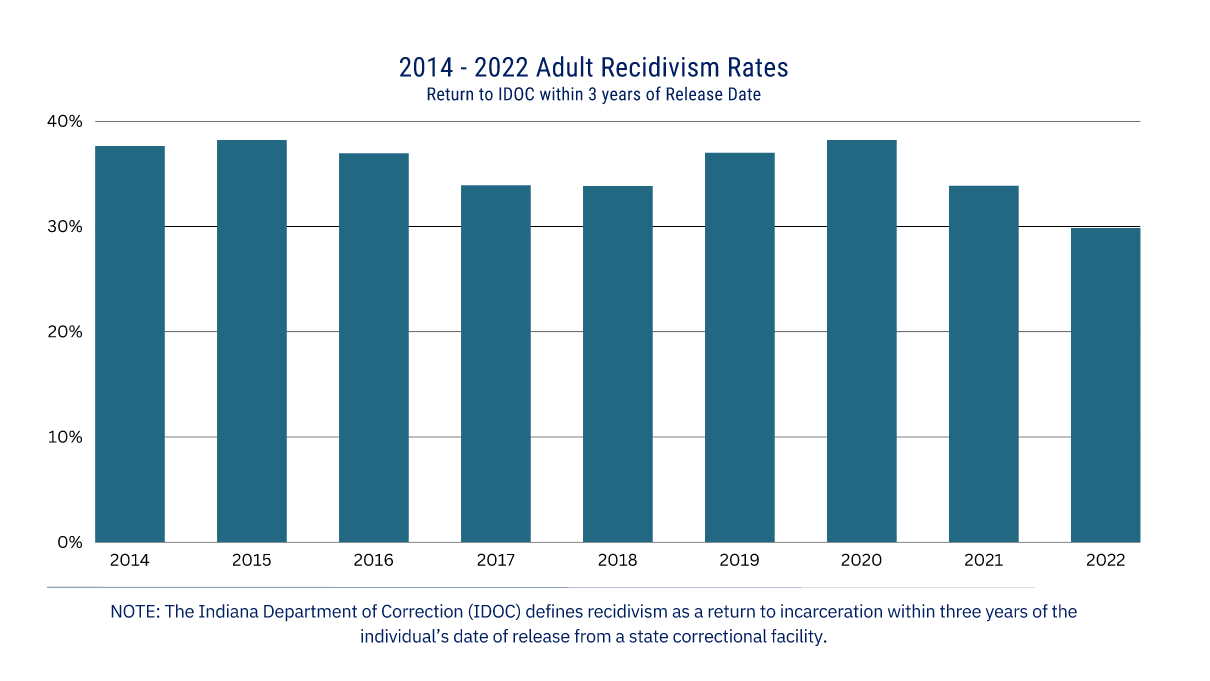
Recidivism Factors
Those individuals who participated in a work release program were 47.72% less likely to return to prison when compared to individuals who did not partake in a work release program.
Work Release Programs
The younger the individuals is at the time they are released, the more likely they are to return to the IDOC.
Age at Release
Moreover, individuals serving less than 5 years with IDOC represent approximately 61.54% of all recidivists.
Length of Sentence
Individuals who had zero conduct violations during their incarceration period were 36.79% less likely to recidivate when compared to those who had at least one conduct violation.
Conduct Violations
Individuals who received visits from family or friends while incarcerated were 22.68% less likely to recidivate compared to those who did not receive any visits.
Support Systems
Divisions Overview
Division of Re-entry Services
1,172
Total Certifications Earned in 2022
122
Employer-Desired Certifications Earned
843
High Demand Job Training Certifications Earned
784
Incarcerated Individual Issued Certifications
Case Plan Credit Time
In 2022, the Case Plan Credit Time (CPCT) program was implemented. The transition to CPCT allows the IDOC to better prepare the incarcerated population to return to local communities. CPCT offers a multidisciplinary approach to programming, incentivizing the incarcerated individual’s behavior that reduces criminogenic risk factors, increasing their likelihood of not returning to incarceration upon release. Facility staff completed over 37,500 reviews, with our analyst processing almost 32,000. As a result, 374,079 days of additional earned credit time was given to incarcerated individuals across the state.

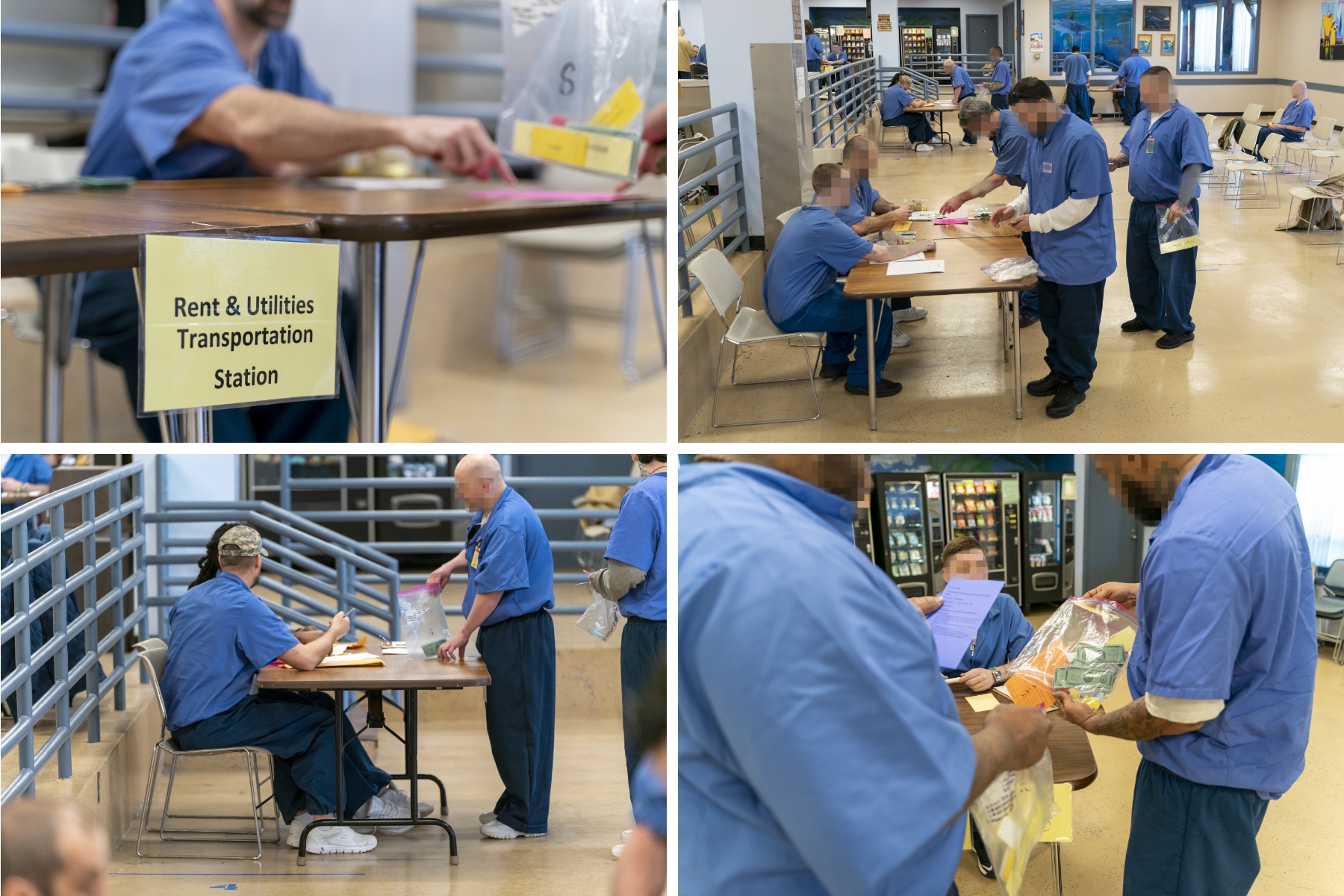
Re-Entry Simulations Across the State
To further prepare incarcerated individuals for release back into their community, re-entry monitors from Central Office ensured that all facilities hosted at least one re-entry simulation in 2022 and increasing that number to two for 2023. Developed by partners at the Federal Bureau of Prisons and adapted for IDOC facilities, these simulations showcase the challenges of returning to the community in a unique, interactive, and fun way. Staff also participate in the simulation’s game-like structure.
HIRE
The Duke Energy Foundation awarded HIRE a $250,000 grant to provide educational opportunities for formerly incarcerated citizens and businesses, alleviating barriers to successful employment and developing new partnerships.
The grant, which runs through August 2023, aids HIRE focus with:
- Direct client services: educational opportunities to skill up HIRE’s client workforce to meet business needs, including clean energy installation, and partnering with non-profits to assist with barriers formerly incarcerated citizens face, such as housing and transportation
- Direct business services: assisting with recruitment, retention and hiring, and providing training on how to best work with individuals to promote success
- Re-entry focused alliances: develop partnerships to support successful re-entry and long-term employment
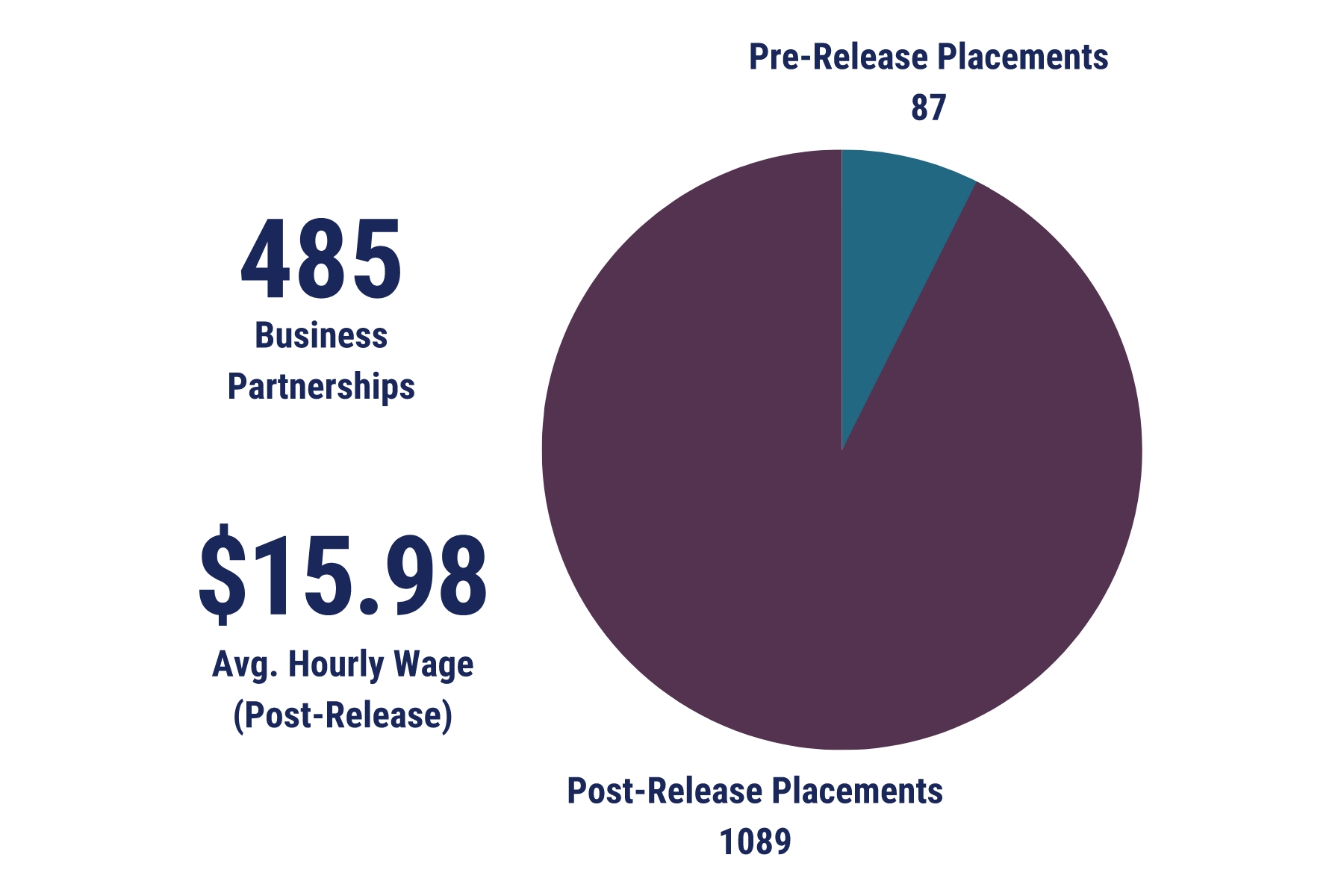
Community Corrections
Bureau of Justice Assistance (BJA) Grant
The Community Corrections Divisions is now in its second year implementing the Bureau of Justice Assistance (BJA) Grant. The Innovations in Supervision Initiative grant is designed to improve community supervision and reduce recidivism. This project allows the state to not only evaluate Community Corrections agencies in Indiana, but to also provide a roadmap for the agencies to build on practices and assist with areas for growth. Community Corrections is using an instrument developed by the University of Cincinnati Corrections Institute, the Correctional Program Checklist-Community Supervision Agency (CPC-CSA) tool.
The Community Corrections (CC) Division staff worked to coordinate, communicate, and execute the goals and objectives for this project. Staff facilitated meetings with state level executives, attended and presented at CC Advisory Board Meetings, presented at conferences, and had countless calls and meeting with grantees to share information and help alleviate any concerns.
The third year of implementation promises to be even busier year, with 57 assessments to be completed, as well as additional task force meetings, and initiating the data collection phase of the validation study.
2022 Grant Funding Awards
The Department of Correction (IDOC) annually awards grants to counties encouraging them to develop a coordinated local corrections-criminal justice system and providing effective alternatives to imprisonment at the state level. In 2022, the following entities were awarded grant funding under the Community Corrections and Justice Reinvestment Grant. Grants awarded must focus on funding evidence-based programs, including programs that utilize cognitive behavioral interventions and have a primary goal of reforming justice involved individuals by working in a collaborative manner with local criminal justice agencies.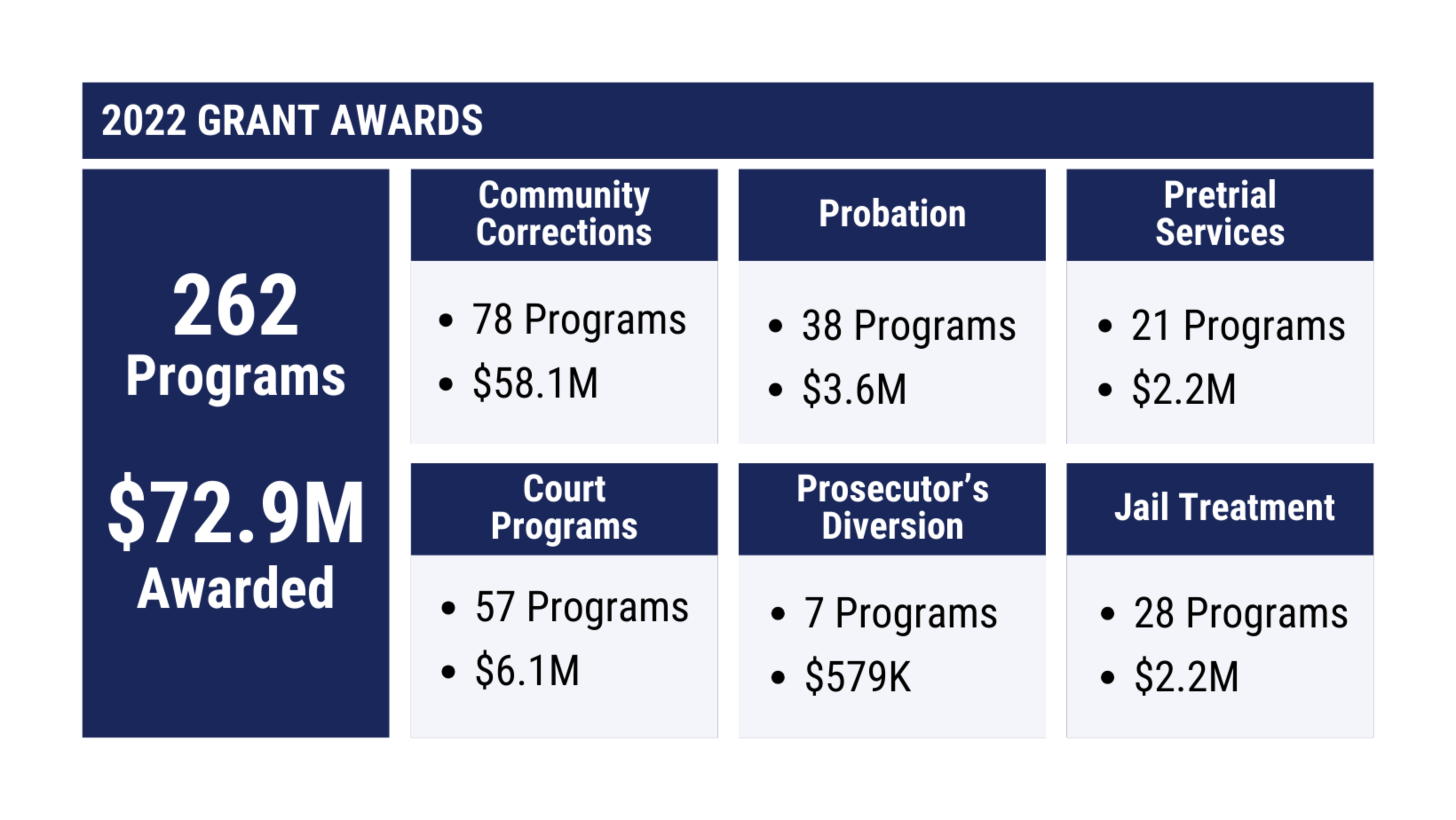
Division of Parole Services
Growing Our Team
Across the state, 30 parole agents were promoted to the newly created ‘Parole Agent II’ position. This new position was developed to create promotional opportunities and upward mobility within the division. The Parole Agent II position creates an intermediate position between the assistant district supervisor and Parole Agent III. Those serving in the Parole Agent II position now function as team leaders in their districts assuming mid-level leadership roles.
New DIO Center
In July 2022, the Office of Internal Investigations (OII) in conjunction with Parole Services began the project of creating a Dispatch, IDACS, and Operations Center (DIO Center). This is the first central radio dispatch center for the department. This new center adds a layer of safety for staff actively working in communities across the state. Parole Services piloted the DIO Center in November with the Gary Parole Office, with statewide implementation soon after. This project was a collaboration between many divisions within the department including the construction of the center, the creation and development of policy and procedures, and the reclassification of 11 staff to operate the center.
Increased Wages
Employment rates and wages for those on parole climbed steadily in 2022. In January 2022, the average hourly wage was $16.36 an hour. By the end of 2022, it was over $17.00 an hour. This increase is attributed to the continued partnership between the division and the Hoosier Initiative for Re-Entry (HIRE).
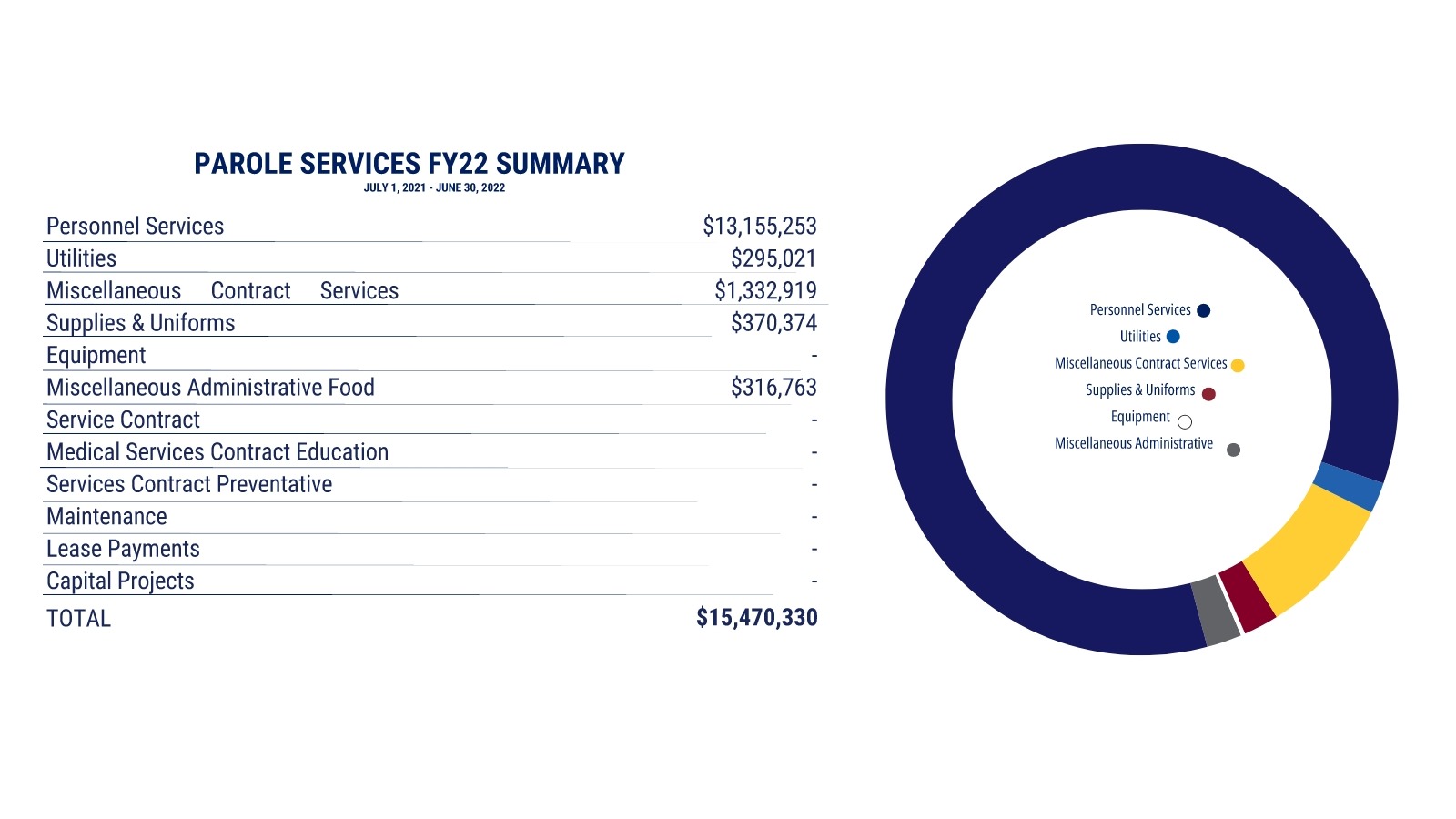

Medical Services Division
Hepatitis C Treatment
The IDOC Medical Division made improvements on efforts to reduce the spread of the Hepatitis C virus in facilities statewide. Since January 2022, 1,918 patients started on treatment for their infections, more than double the number for 2021. One goal for 2023 is to expedite the beginning of treatment after a patient has been identified.
Service Directive Review
A review of all health care service directives in 2022 ensured compliance and improvements in care provided. One major change came in the form of collaboration with classifications to allow patients with mental health needs to transfer to more level 1/Work Release programs. Additionally, a change to the Behavioral Health codes now allows for better tracking those in addiction recovery services who are releasing to the community so the department’s transitional health team can ensure continuity of care.
Substance Abuse Treatment Grant
IDOC Health Services received a $1 million grant from the Indiana Criminal Justice Institute to assist with Residential Substance Abuse Treatment (RSAT). The RSAT grant allows for comprehensive care for patients as well as an enhancement of services from the minute they arrive with the department through their release back to their community.

Division of Diversity & Development
2022 saw the appointment of Deputy Commissioner Erica Parish. While only in the position during the final months of the year, she spent time meeting and coordinating with staff from across the department to develop her Future Engagement Access Training or FEAT plan for the following year. This included the implementation of a revamped staff culture survey that assures the department is listening and gathering feedback on the culture and daily operations of the department. The ultimate everyday goal of Diversity & Development is to educate and support the agency.
Delta
Staff Development and Training (SD&T) collaborated with contract partners at Mi-Case and KPMG to identify key information pertaining to the new online management system, DELTA, since late 2021. SD&T was tasked with developing a plan to train more than 6,000 employees prior to the “Go-Live” date in 2023. In November, 272 staff were certified to instruct DELTA to the end users.
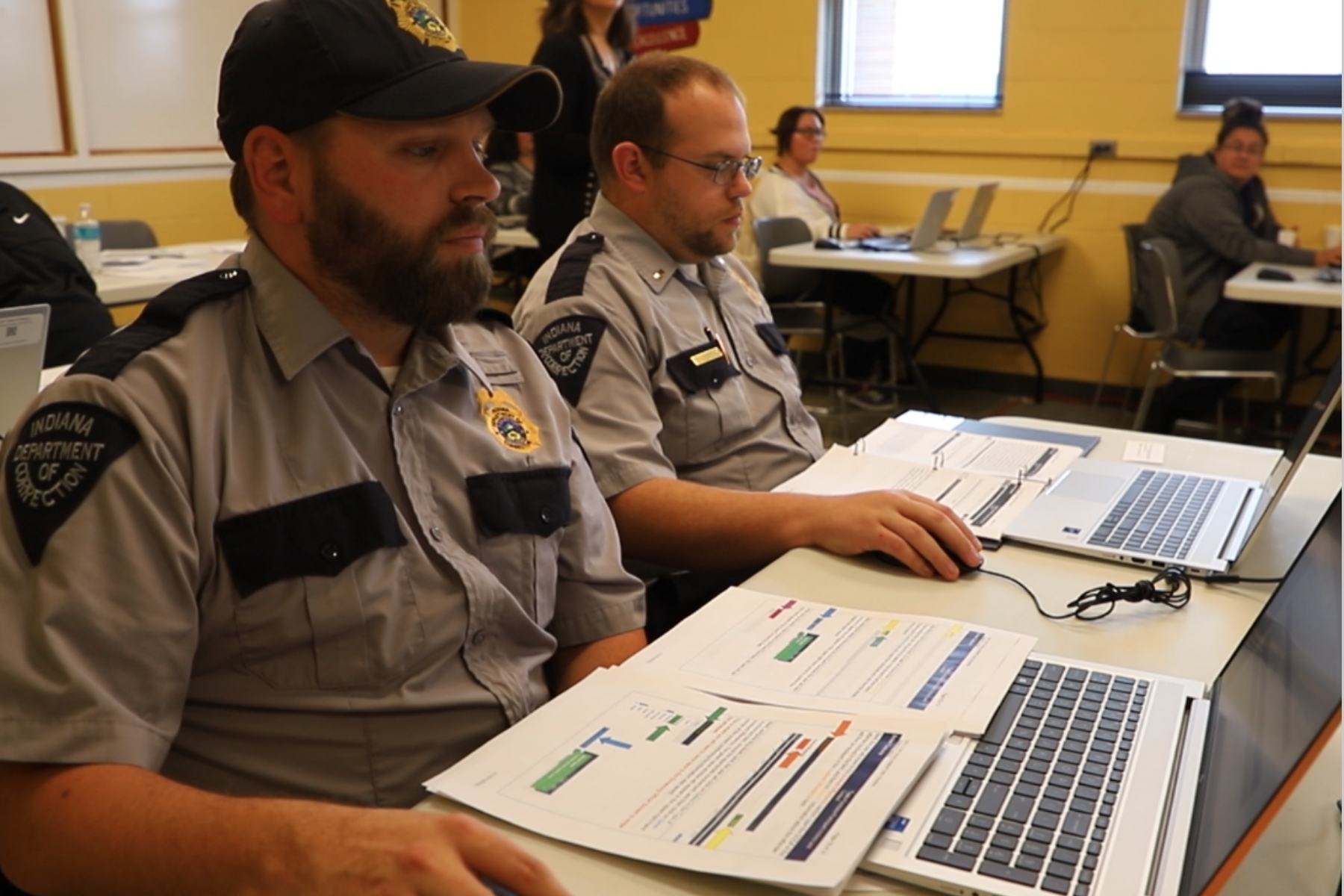
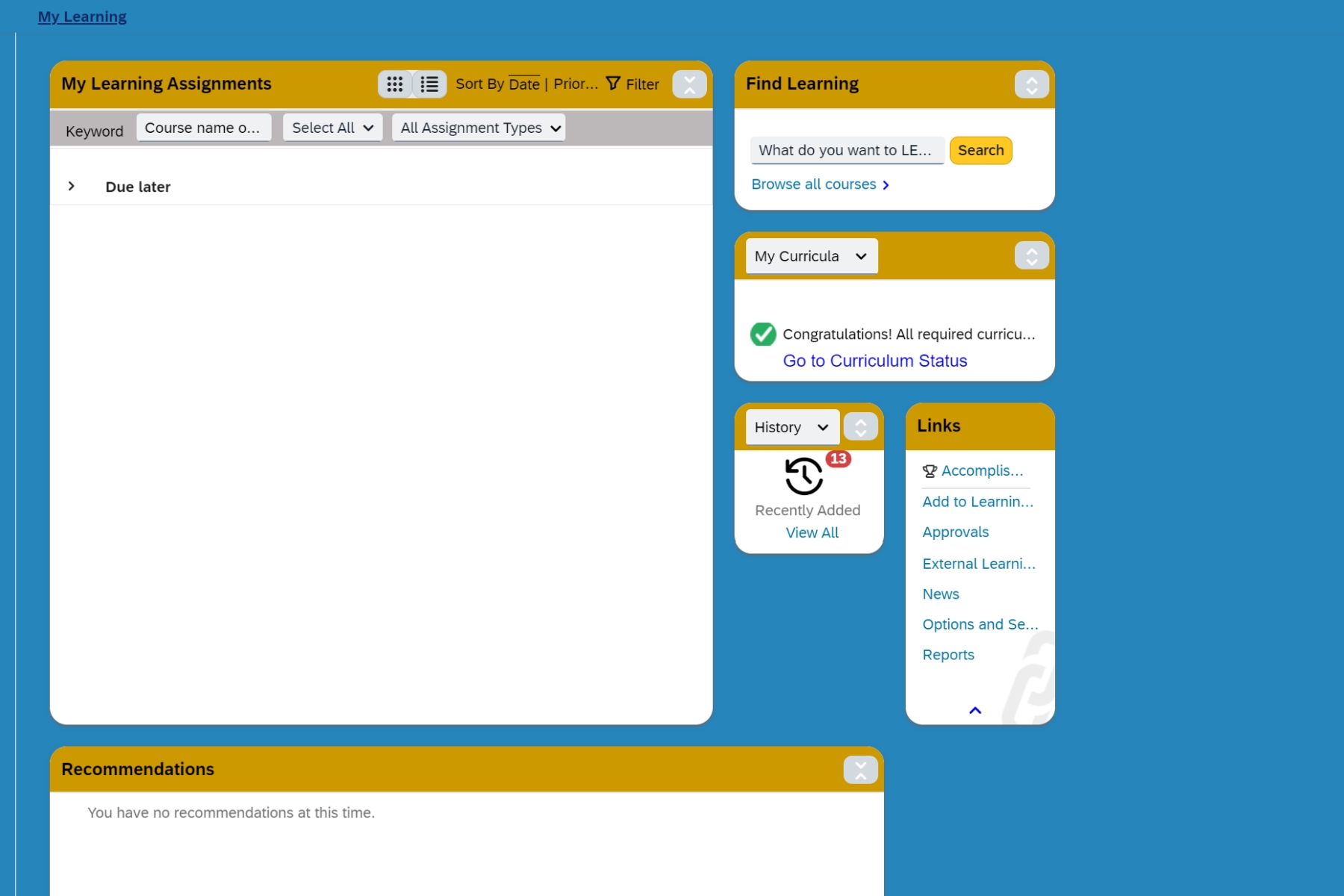
eLearning Modules
Using new software, Articulate 360, the Curriculum Development team updated all eLearning modules. Updates include more interactive modules, knowledge checks throughout, and the option to create content so it can be viewed using various smart devices, such as cell phones or tablets. Not only does this allow staff to complete their required eLearning at a time that best fits their schedule, but it is also ADA compliant, ensuring we are providing the necessary resources to staff to assist with completing their required training.
Staff Wellness
To better focus on physical wellness, SD&T with the help of Recruitment & Retention Coordinator Jerome Williams, created a 5K walking & running series for all staff and the public. The events kicked off at the Staff Development & Training Annual Training Retreat in June. There was a total of 4 run/walks scheduled at New Castle, two at Hummel Park in Plainfield, and Michigan City for the third Experienced and Emerging Leaders Program.

Division of Construction Services
New Facility
Designs are being finalized on the new construction to replace and renew Westville Correctional Facility. An additional $800 million dollars was allocated by state officials to cover unprecedented material and construction cost increases in the market following the COVID-19 pandemic. Preliminary work is set to begin in 2023 including earth-moving and preparatory renovation work on existing buildings that will be repurposed.
New Perimeter
A new fence was installed around the perimeter of the Indiana State Prison and several trees removed to heighten staff sightlines. These updates aim to further prevent incidents involving citizens coming onto the property and attempting to toss contraband over the wall.
Facility Improvements
Miami Correctional Facility (MCF) made several improvements to increase the safety and security in the housing units. Thicker cell windows were added to the AHU Housing Unit making it more difficult for incarcerated individuals to break the windows out. In addition, outside recreation cages were installed. All Units in the facility received new LED lighting upgrades in housing unit day rooms and cells. This now provides brighter lighting and making it more difficult to make weapons from lighting materials. As a result of these changes, use of force incidents dropped by 57% and staff assaults were down by 70% compared to 2021.

Indiana Correctional Industries
NCIA Performance Excellence Award
In April, ICI attended the 2022 National Correctional Industries Association (NCIA) National Training Conference in Louisville, KY. The annual conference provides learning and networking opportunities to correctional industries practitioners from across the nation. ICI was awarded the NCIA Performance Excellence Award 2022 during the conference’s Annual Awards Banquet. The national award recognizes outstanding leadership, performance, and mission impact by a correctional industry.
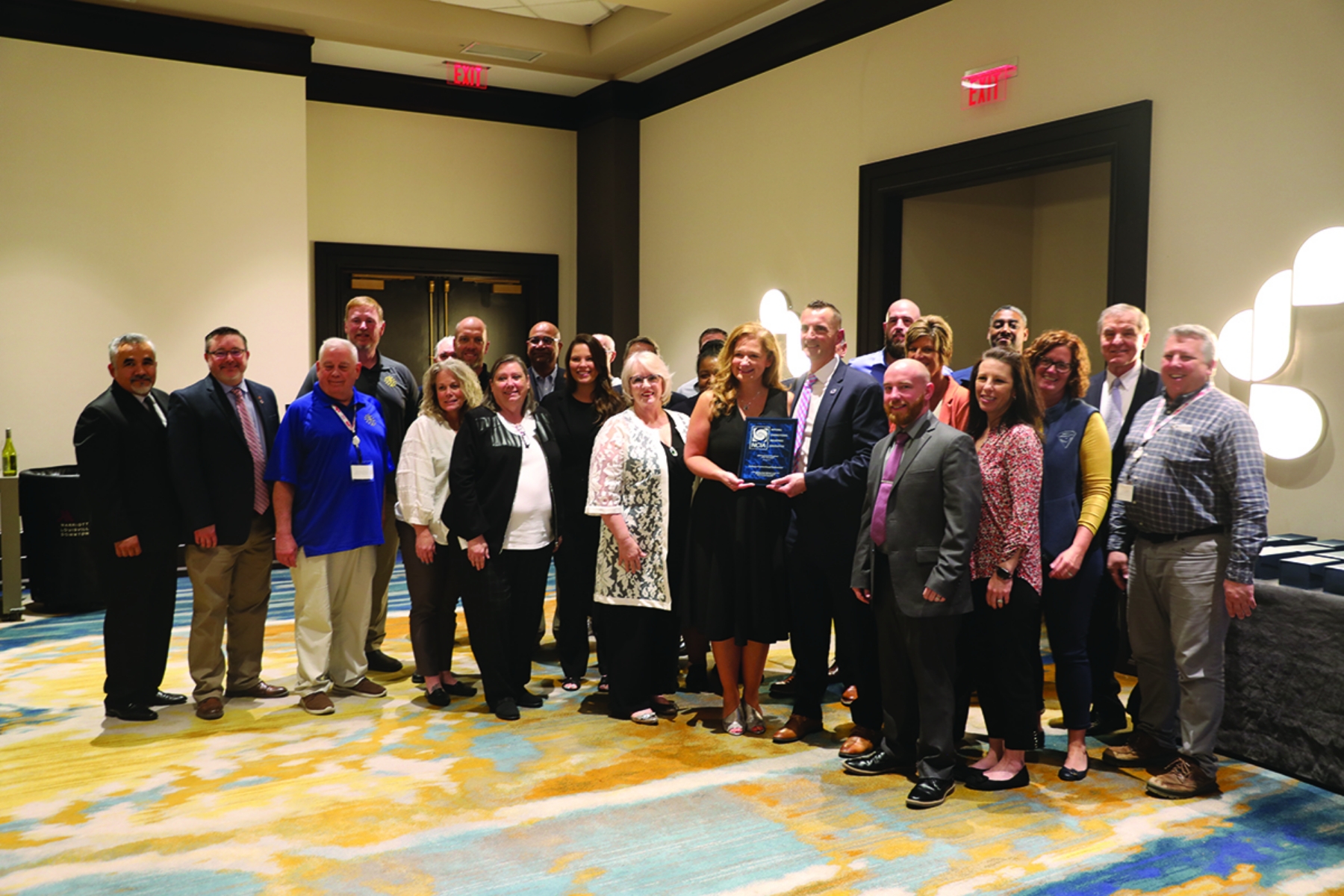
Partnership with Goodwill
October 19, 2022, marked the first day of operation for ICI’s latest joint venture with Goodwill of Central and Southern Indiana, and it’s first at Heritage Trail Correctional Facility. The new joint venture currently provides 12 incarcerated individuals work opportunities to put together kits of component parts used in the Healthcare industry.
New Director
In August 2022, Lindsey Ellison was promoted to Director of Indiana Correctional Industries. Prior to her promotion, Lindsey served as the Deputy Director of Operations with ICI. A seasoned professional with more than 12 years of experience in corrections, Lindsey has worked for the department and ICI as a Transition Specialist, Program Coordinator, Plant Manager, and Assistant Re-Entry and Operations Manager.
A Tactical Approach
ICI launched its new line of “Torch Tactical” pants in December 2022. ICI invested in new equipment and training to create the new “Torch Tactical” clothing line. The new pants are being manufactured at the Miami Correctional Facility and IDOC will no longer be dependent on third-party vendors to purchase pants and other tactical clothing.
Below you will find the Indiana Department of Correction Annual Reports. In these reports you can learn more about the different divisions of the Department, IDOC facilities, offender programs, youth services, and some of the major accomplishments of our staff and the offenders over the past years. The Agency values innovation and continuously strives for improvement and these reports showcase the Department's successes, progress, and commitment to its mission.
Annual Report for the Years 2016-2021
2021
Download PDF: 2021 Annual Report
2020
Download PDF: 2020 Annual Report
2019
Download PDF: 2019 Annual Report
2018
Download PDF: 2018 Annual Report
2017
Download PDF: 2017 Annual Report
2016
Download PDF: 2016 Annual Report
Annual Report for the Years 2010-2015
2015
Download PDF: 2015 Annual Report
Download PDF: 2015 Annual Transition Report
2014
Download PDF: 2014 Annual Report
2013
Download the PDF: 2013 Annual Report
2012
Download the PDF: 2012 Annual Report
2011
Download the PDF: 2011 Annual Report
2010
Download the PDF: 2010 Annual Report
Annual Report for the Years 2005-2009
2009
Download the PDF: 2009 Annual Report
2008
Download the PDF: 2008 Annual Report
2007
Download the PDF: 2007 Annual Report
2006
Download the PDF: 2006 Annual Report
2005
Download the PDF: 2005 Annual Report

